2023 Nissan Z First Drive Review: The Franchise

FAST FACTS
| Engine: | 3.0L V6 Turbo |
| Output: | 400 hp, 350 lb-ft |
| Transmission: | 6MT / 9AT, RWD |
| US fuel economy (MPG): | TBA |
| CAN fuel economy (L/100KM): | TBA |
| Starting Price (USD): | $41,015 (inc. dest.) |
| As-Tested Price (USD): | $54,015 (inc. dest.) |
| Starting Price (CAD): | $46,489 (not inc. dest.) |
| As-Tested Price (CAD): | $64,248 (not inc. dest.) |
As the fighter jets roared above, I couldn’t help but think of an iconic film of the Eighties.
The motion picture industry has been rocked over the recent years by any number of factors, including the rise of streaming services as well as the incredible costs involved in the actual production of a feature-length film. So it’s not at all surprising that it feels like most flicks making it to the cinema are based on proven concepts – such as the uncountable comic book and superhero franchises, as well as sequels to beloved hits. One such film – in theory coming soon – is the much-delayed sequel to the Tom Cruise blockbuster Top Gun.
I saw the trailer for the new film once again on YouTube while sitting in the airport to attend the first drive event for the 2023 Nissan Z in Las Vegas – part of which was located at the Las Vegas Motor Speedway, immediately across the street from Nellis Air Force Base. Fighter jets frequently overflew the track, interrupting my colleagues’ attempts at quality audio for their YouTube channels.
Get a Quote on a Nissan ZYes, I know Top Gun is a film about the Navy, not the Air Force. Just go with me.
As the jets blasted around the mountains and again as I blasted the Z through the canyons, I asked myself why these sequels exist. Do we really need yet another film with a contrived plot? Do we need another sports car as the world transitions away from internal combustion engines?
Exterior Styling
As we’ve seen since the Z Proto show car was revealed about 18 months ago, the design of the new Z is quite clearly an updated homage to the greatest hits of 52 years of the Z. The LED light signature, according to Hiroshi Tamura, Chief Product Specialist of both Z and GT-R, is meant to echo the way light reflected off of aftermarket glass lamp covers that were frequently fitted to the earliest Z.
Out back, the taillamps look like LED-lined caricatures of the rear lights on the Z32-generation 300ZX of 1990-1996.
This detail on the hood has a creased outline that looks much like the power bulge on the earliest Z as well.
Since the debut of the Z Proto, some have complained about the huge opening at the front of the Z – it looked like a huge black hole. Rows of ovals have been fitted here to give some more definition to the grille. Tamura notes that as the Z has grown turbochargers, the need for cooling is much more significant than on the outgoing 370Z – thus the large open mouth stance. Further, designers were inspired yet again by the original Z – this time, a 240Z without the front bumper.
Powertrain
You’ll notice that Nissan has moved away from any sort of alphanumeric numbering scheme here – where previous models have echoed the engine displacement in the model name (i.e., 3.7 liters for the 370Z). This is now simply the Z. After all, this car now has a three-liter twin turbocharged V6, and making it the 300Z would likely make some think that it is somehow lesser than the outgoing model.
The twin-turbo V6 now produces 400hp at 6400rpm, and 350 lb/ft of torque as low as 1600 RPM. It gets off the line with authority – Nissan set up an untimed drag strip area in the pitlane of the oval track, allowing opportunities to launch the new car in both automatic and manual transmissions. Also, we were given back-to-back time in the outgoing 370Z to feel the difference in power delivery.
I’ll admit some fondness for the old powertrain, however – while clearly down on power to the new-style engine, there is a magnificent feel to ripping a naturally-aspirated engine to well over 7000 rpms. That’s not happening in the new turbo six – though it does sound better both outside and inside the car than the old VQ series engine did.
The two transmissions offered are a six-speed manual – with a few improvements to the shifter mechanism and to synchronizers to give a better shift feel – and a new nine-speed automatic. With a narrower spacing between gears, I wouldn’t be surprised if the automatic gives a better calculated acceleration time.
For the autocrossers out there eagerly awaiting, the manual gives 65.2 mph at the top of second gear as determined by a GPS app on my phone. Depending on the cones, this might help minimize the need for third gear.
SEE ALSO: 2023 Nissan Z Hands-On Preview: 5 Things We Learned About The Retro-Tastic Sports CarNew this year is launch control, similar to what has been found on the GT-R. It’s standard on the automatic-equipped Z, as well as on the Performance and Proto Spec manual transmission models. Those Performance and Proto manual-trans cars also get a no-lift shift function, allowing upshifts without lifting your foot from the throttle. I drove and launched the automatic Z with launch control, and the difference in violence in getting the car off the line was pronounced, with a fun little wiggle to the rear as the trans grabs second gear at full throttle.
Interior and Tech
The brief time we had with the old 370Z at the drag launch reminded me how old the interior was, with orange lighting everywhere and GASP! no touchscreen! How did we ever survive?
The new Z, conversely, is equipped as a new car these days should be – with an eight or nine-inch touchscreen display seemingly lifted from the rest of the Nissan lineup. The images are clear and intuitive, with real knobs and buttons for a number of functions. HVAC controls are a trio of knobs ahead of the shifter.
Gauges include a TFT display ahead of the steering wheel – customizable and configurable for a number of different displays – as well as the trio of centrally-mounted analog gauges canted toward the driver. This has been a signature of almost every Z since 1970 – though in the days of temperamental carburetors a vacuum pressure gauge was quite welcome. These days, having an analog gauge showing turbo pressure and another displaying turbo speed seems a bit weird.
A full suite of driver assistance/safety features are included, such as adaptive cruise control, automatic emergency braking, lane departure warning, and blind spot monitoring.
SEE ALSO: 2023 Nissan Z Debuts With 400 HP, Retro-Cool Looks and Available ManualSeats feel very similar to the excellent chairs on the 370Z – the cloth material on the base Sport model may actually be the same as the old car. The Performance edition gets leather power seats – check out the stunning available blue interior here. I’m in love.
Driving
While enthusiasts will likely refer to the newest Z as the Z35 generation, it is still technically the Z34 chassis carried over (with significant changes) from the 370Z – dating to 2009. It’s been upgraded with increased rigidity and stiffness to improve handling and ride quality. The suspension and steering are improved as well, with new monotube dampers at all four corners, increased caster for better steering feel, and a new electrically-assisted power steering system.
It adds up. While I never felt the outgoing 370Z was a slouch in the twisties, there were times that it felt old – perhaps a bit of cowl shake making the steering feel a bit nervous. No longer. It’s not an Infiniti while cruising the highway – expansion joints are announced with a thump – but the newest Z loves corner carving. The torque delivery is so linear that I found myself driving speeds that would likely find me in prison back home in Ohio – while in fourth gear. Oops.
Our track time was limited to a few lead-and-follow laps around a short track held mostly in third gear – but the Z felt right at home. I felt a bit dirty as I rather enjoyed my time with the automatic car on track – almost as much as the manual – since it was just that much easier to focus on my line and braking points without worrying about ratios. That’s likely down to my relative lack of track experience, though. Assuming the engine, transmission, differential, and brakes are sufficiently cooled, I’m certain we will be seeing the new Z at tracks across the continent soon.
Pricing
Here’s the meat of the matter – Nissan had suggested that the Z would start under $40,000 US – and it’s there, barely. The Z Sport – the base model with cloth seats, sliding-caliper brakes, and no limited slip differential – starts at $39,990 US with either the six-speed manual or the 9-speed automatic. Add $1025 in destination fees.
SEE ALSO: Exploring the Future of Nissan Z Through the Lens of its HeritageIn Canada, that same Z Sport is $46,498 with the manual, $47,998 with the automatic. Destination and other fees were not available at press time.
The Performance trim – fitted with leather seats, performance brakes, 19” RAYS wheels, a larger touchscreen and Bose audio, and the limited-slip differential, starts at $49,990 US for either transmission – plus that $1025 destination. Canadian pricing is $58,498 manual/$59,998 automatic.
The limited Proto Spec edition – limited to 240 pieces in the US and a non-specific “limited number” for Canada, with bronze wheels, yellow calipers, and yellow accents and accent stitching on the interior. The US gets the Proto Spec at $52,990 plus $1025 destination – in Canada, $64,248 manual/$65,748 automatic.
For me, I’m having trouble with the ten thousand dollar (US) gap between the Sport and Performance trims. At $40k, the Sport seems like a decent value – 400hp atop the great handling we’ve been seeing from the now-classic 370Z for a decade is a nice upgrade. And, unlike many other cars over the years from many automakers, the base trim isn’t a penalty box. The standard 18” wheels are handsome, while the cloth interior is comfortable and attractive.
The $50k for the Performance trim, however, is a bit hard to swallow. I won’t deny that upgraded brakes and the limited slip differential are great things to have – especially if you’ll be tracking your Z – but at that price you’re knocking on the door of some faster machinery like the Mustang. There was once a time when a Z shopper wouldn’t ever consider a Mustang and vice versa – but with the extreme contraction of the mid-priced sports car market recently, cross-shopping is inevitable.
Conclusion
I’m not completely convinced that the world needs a Top Gun sequel. Other than possibly rehabilitating the public image of the world’s most famous couch jumper, it’s not a story that really needed closure. And yet I’ll watch it – heck, I might even pay money to go see it in a theater, which is saying something for me.
This sequel from Nissan might be a similar story. The company, doing quite well selling a huge variety of crossovers, doesn’t really need to pad the bottom line with a low-volume sports car. And yet, people will buy it because it’s a Z. It’s been entirely too long since we’ve had an updated Z, and this car finally brings the Z into the modern era with credible performance and improved convenience features.
I’m not sure that this Z will bring that many converts from other sports cars over into Z land. But it’s incredibly necessary, if for nothing else than to prove once again the company has a soul.
FAQs
How much is the 2023 Nissan Z?
Pricing in the United States starts at $39,990 before destination charges. In Canada, it begins at $46,498.
How much horsepower does the 2023 Nissan Z have?
It has 400 HP from a turbocharged 3.0-liter six-cylinder engine.
How fast is the 2023 Nissan Z?
We weren’t able to time-test it, but it felt noticeably quicker than the 370Z in a back to back drive.
Discus this story on our Nissan Z Forum.
Become an AutoGuide insider. Get the latest from the automotive world first by subscribing to our newsletter here.
LOVE IT
- Styling classic without being too retro
- Good power and handling
- Interior tech finally up to date
LEAVE IT
- $10k US jump to Performance trim hard to swallow
- Doesn't rev high like the old naturally-aspirated engine

A lifelong Ohioan, Chris grew up around classic rusty sports cars from Japan and England. He's been covering the automotive industry for nearly 10 years, and is a member of the Midwest Automotive Media Association (MAMA). A family man, Chris drives a Chrysler minivan, and uses his rusty old Miata as a shelf, until the day it is uncovered as a priceless barn find.
More by Chris Tonn



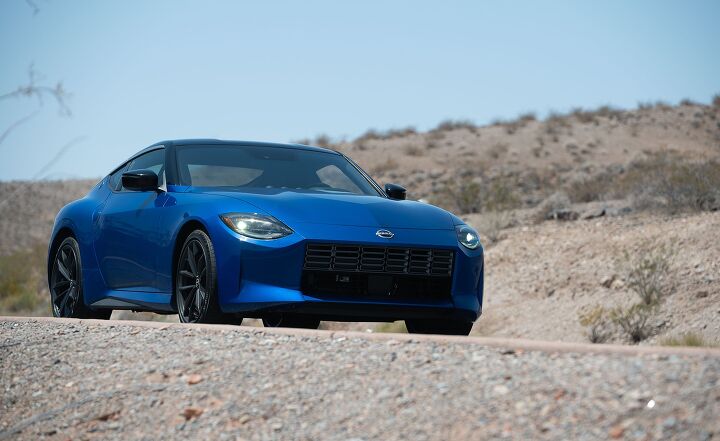










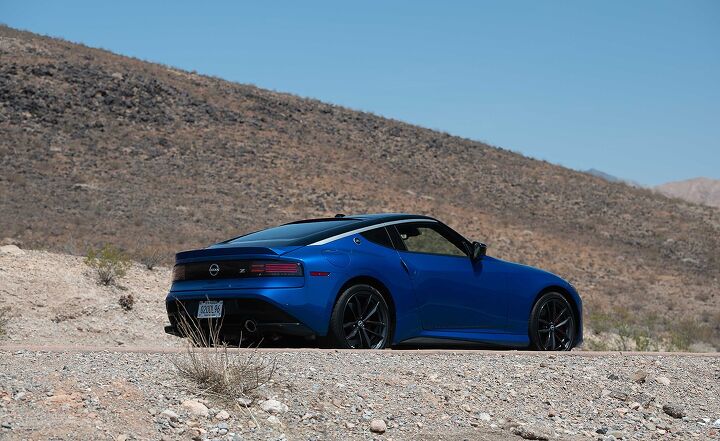

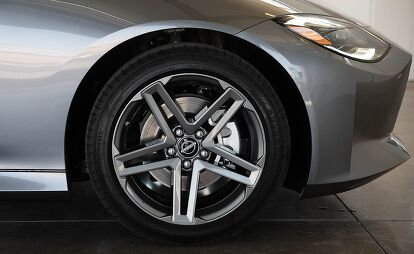
















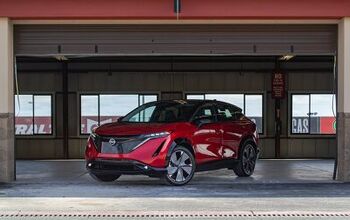
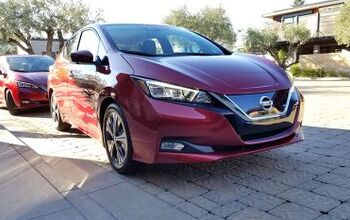


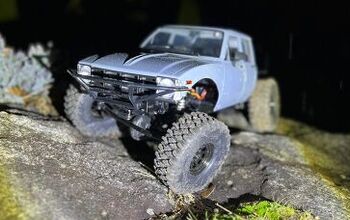
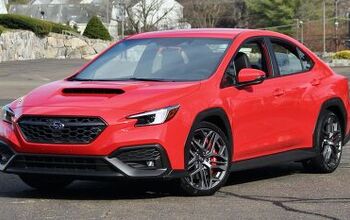
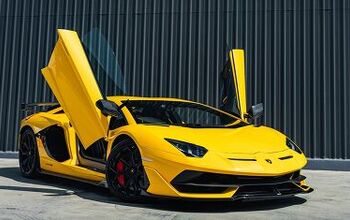
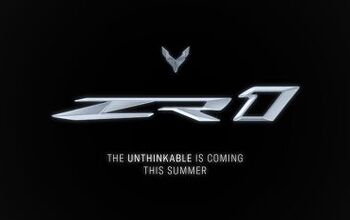


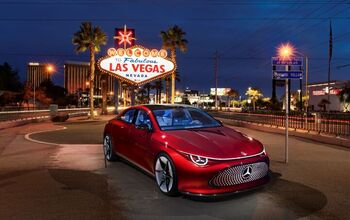

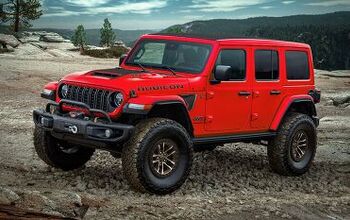
Comments
Join the conversation
I am disappointed. I have always loved the z. Unfortunately it seems to continue to decline with every new model. This model just doesn't seem very good. Neither power wise or looks wise. You can get better powered Mustangs and Camaros for the same money. Looks are subjective but I do think they look better. The Z tried to hard to combine looks from older generations and it just looks mismashed. Even worse the top model is over 50K that's starting to close in on vette territory. OK an extra 10k for the vette isn't really all that close but I definitely would pay the extra monthly cost to own a base vette over the Z. I honestly think I would look at the Mustang over the Z, which is sad because I never thought I would think that.
How much space in the hatch? Love the roofline (hints of 370Z and 240Z) and rear quarter/valence and bumper blending. Front end looks a bit lost? last minute design? Headlights accomplish the retro nod in the front though. Retro for all the right reasons, making you see the old cues without making it look old.